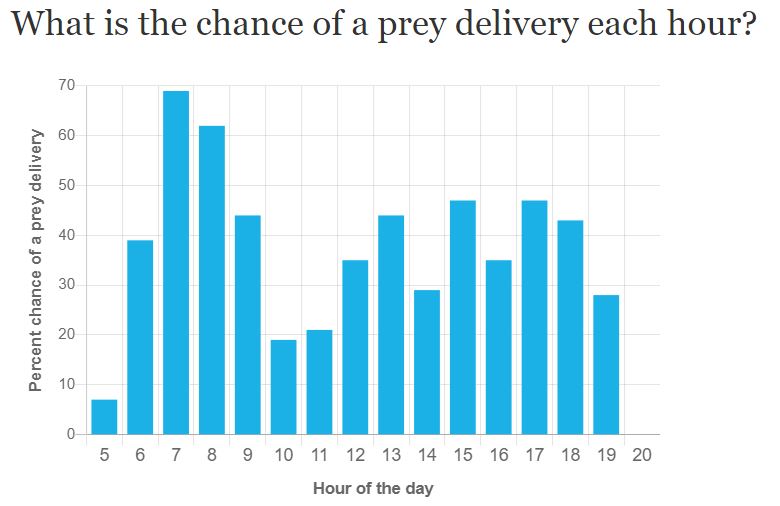Nestlings snack all day on the prey delivered in the morning or afternoon
October 13, 2020
Last week we released the first set of visualizations that looked at participants’ sampling effort and the first behavior we studied: vocalizations. This week we dive into the other intriguing and fun-to-watch behaviors: feedings, prey deliveries, and three nestling-specific ones (flapping, walking, and mantling).
To kick off this second week of data exploration, we feature two related visualizations about feedings and prey deliveries.
The visualizations show the percent chance that either a feeding event or a prey delivery will take place each daylight hour. A feeding event could be an adult feeding the nestlings or the nestlings feeding themselves, and a prey delivery is when either of the adults bring prey to the nest.
We calculated the percent chance by counting the number of times each hour interval was watched by at least one participant and had the behavior, and dividing this number by the total number of times each hour interval was watched by at least one participant. For example, for the feeding visualization, participants watched the 5th hour interval 14 times and recorded that there was at least one feeding event 5 times (5/14 = 0.37). If we multiply 0.37 by 100 and we get 37% as seen in the visualization.
Interestingly, the percent chance of a prey delivery peaks once in the morning and a second time in the afternoon, while the percent chance of a feeding stays relatively high throughout the whole day. Perhaps it is best for the adults to forage in the morning and afternoon, while the nestlings can feed throughout the day thanks to the “prey pantry” that builds up in the nest.
What do you think? Does this explanation make sense? Could something else explain the data? Let us know in the forum below.
Then, check out the interactive versions of these visualizations (feeding, prey delivery) as well as the other behavior visualizations.

